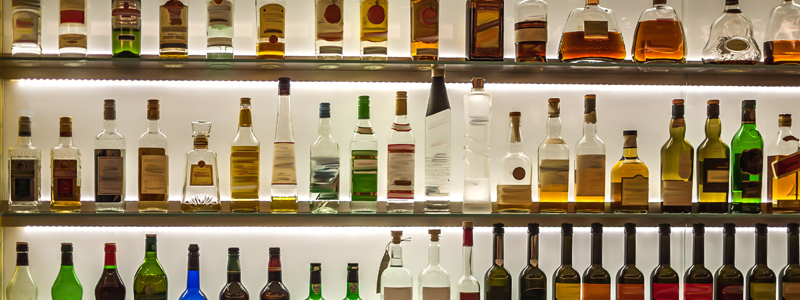Last Sunday was Father’s Day. From what I understand, most families spend the day celebrating their dads with sports, beer, and BBQ cookouts. At my house, however, the holiday is a little different. Every year on the third Sunday in June, the Blooms spend the day cleaning out the garage.
A human pinnacle of organization, my dad takes advantage of the one day a year his whole family has no choice but to listen to him by mandating we divest ourselves of unnecessary clutter. This year, due to unprecedented productivity in the garage, we wound up inside the house to tackle some new projects. I was particularly excited to be tasked with cleaning and organizing the liquor cabinet.
As I’ve mentioned before on this site, my parents pretty much exclusively drink red wine (rosé in the summer) and tequila. That means that they’ve amassed quite a collection of both spirits, while supplies of other liquors tend to be more erratic. My job was twofold: organize the collection of wine while curating and paring down the liquor supply.
As a rule of thumb, all alcohols should be stored in a cool, dark and dry place to best preserve them. Unlike wine and liqueurs, which go bad after a certain amount of time, the shelf life of any sealed spirit is technically indefinite. This meant that any unopened bottles I found, depending on the quality of the brand, could either be organized appropriately in the cabinet or cast aside (most likely to be donated to the supply at the next crowded apartment party I attend—thanks dad!).
Opened bottles of alcohol are more complicated: any liqueurs that have sugar or added ingredients will break down over time, losing their flavor and structure. Look for visual cues like crystallization or discoloration that might indicate a bottle is past its prime. Spirits like Bailey’s Irish Cream, which have dairy products or egg in them, typically have expiration dates listed on the bottle. As a rule, these kinds of products should be disposed of within 18 months of being exposed to air. Base spirits, such as whiskey or gin, will break down over several years once opened. I found a few bottles of vodka that I’m guessing had been opened during the 1980s—I dumped their contents down the sink while breathing into my t-shirt.
Wine can be a little more complicated, but as a general rule if the bottle was $30 or under it was most likely meant to be consumed within a year or so of purchase. Only a very small percentage of wines are actually meant to age for long periods of time. If you still aren’t sure there are a variety of apps and websites you can use to look up specific bottles to see their quality, value, and drinkability over time. Wine-searcher.com and scanner apps like Vivino and Delectable, which utilize smartphone cameras, are helpful resources for learning about any bottle you come across.
In a true Father’s Day organizational feat, I was able to clear out the spoiled liquor and organize the contents of the cabinet by category, with the most frequently grabbed items at the front alongside a selection of no-longer-hidden gems to enjoy with dinner. I was even able to pilfer a couple of Cabernets and a small bottle of anejo tequila that hopefully no one will miss (sorry mom and dad!).

